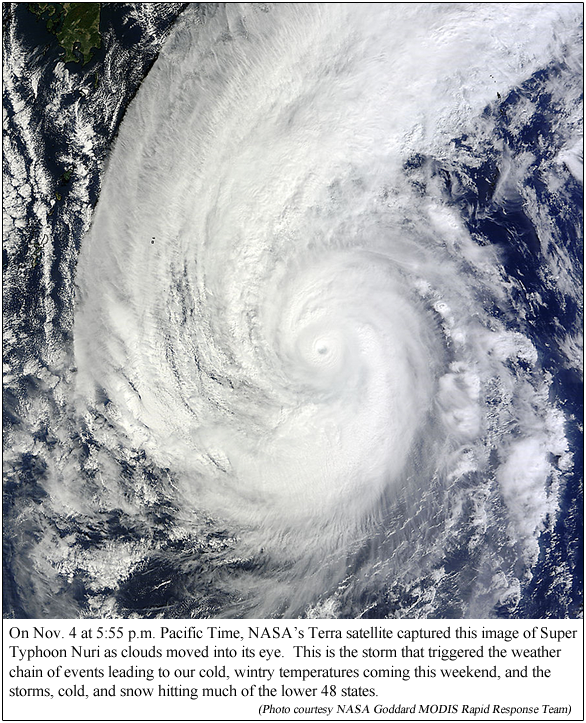Make the most of Boundary County's brilliant sunshine and relatively nice autumn temperatures while we have them this weekend. Drastic changes are on the way.
Today, while here we have been enjoying temperatures near 50 degrees with abundant sunshine, the Aleutian Islands in Alaska have been pounded with storm conditions including wind gusting to near 100 mph and ocean waves the size of a five-story building.
This Aleutian Island weather system, one of the worst storms ever recorded there, will eventually exert its impact on the lower 48 states. As it pushes wintry conditions southward, forecasters are saying that about 2/3 of the lower 48 states will be affected with temperatures dropping 10-20 degrees below average for this time of year.
Here locally, temperatures will begin to drop by early Monday. A high temperature of 36 degrees is anticipated for Monday (with a low temperature 16 degrees). Tuesday and Wednesday highs are expected to be in the 20s, and hovering right around freezing for the remainder of the week.
In other areas of the nation, including the upper plains, and the midwest, this same weather system will deliver snow along with those cold temperatures, in some places up to a foot. Single digit temperatures are expected for parts of Montana. This cold weather system will eventually work its way to the East Coast.
All of this got started back on October 28. On that day, while we were carving pumpkins, buying Halloween candy, and getting kids' costumes ready here in Boundary County, this storm system was being born 6,000 miles away in the ocean near Guam. By Halloween Day, while we were all trick-or-treating during a fairly pleasant Halloween evening, that storm was upgraded to a tropical storm.
By the next day, while our local kids were munching on their Halloween haul, the storm had progressed to typhoon status, and was making its way toward the Aleutians. The next day, it was being classified as a super typhoon, named Super Typhoon Nuri, with some sustained wind speeds up to 180 miles per hour.
The low pressure system associated with Super Typhoon Nuri were lower than even Superstorm Sandy. With those conditions and low pressure, Nuri became the most intense extratropical cyclone ever known over the North Pacific since such record keeping began.
Nuri weakened on November 4, but its remnants slammed the Bering Sea and Alaska's Aleutian Islands, and was described as the most powerful storm to hit the Bering Sea in known history.
And that's the storm whose effects will bring our subfreezing temperatures to Boundary County and the rest of the lower 48 this week, all having started 6,000 miles away eleven days ago.
This is the week to start unpacking the winter gear!
